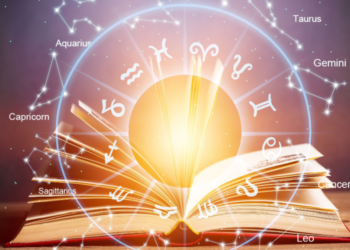What is a Horoscope? Exploring the Depths of Vedic Astrological Charts
Introduction
In the world of Vedic Astrology, a horoscope or Janma Kundali is not just a chart; it’s a celestial map of an individual’s life. It’s a complex diagram that encapsulates planetary positions, houses, dasas, and transits, each holding profound meanings and influences. This blog will take you on a journey through these key elements, revealing their significance and impact on our lives.
What is a Horoscope?
A horoscope, in Vedic Astrology, is a detailed diagram that represents the positions of the sun, moon, planets, and astrological aspects at the time of an individual’s birth. This cosmic snapshot is used to interpret various aspects of life and personality, offering insights into a person’s past, present, and potential future.
Janma Kundali: The Birth Chart
- Definition and Significance: The Janma Kundali, or birth chart, is a more specific term in Vedic Astrology. It’s a detailed chart created based on the exact date, time, and place of birth. It’s considered the blueprint of one’s life, holding keys to understanding personal strengths, challenges, and life’s purpose.
- Components: The chart is divided into twelve houses, each representing different areas of life. The positions of planets in these houses at the time of birth influence various aspects of an individual’s life.
The Twelve Houses in Vedic Astrology
- First House (Ascendant): Self, personality, appearance.
- Second House: Wealth, possessions, values.
- Third House: Communication, siblings, short trips.
- Fourth House: Home, mother, roots.
- Fifth House: Creativity, children, romance.
- Sixth House: Health, service, work.
- Seventh House: Partnerships, marriage.
- Eighth House: Transformation, sexuality, mysteries.
- Ninth House: Philosophy, long-distance travel, higher learning.
- Tenth House: Career, fame, reputation.
- Eleventh House: Friends, groups, aspirations.
- Twelfth House: Subconscious, hidden strengths, secrets.
Planetary Influences
- The Role of Planets: Each planet in Vedic Astrology symbolizes specific energies and aspects of life. For instance, Mars represents energy and aggression, while Venus is about love and beauty.
- Planetary Positions and Aspects: The positions of these planets in the various houses and their aspects (angles) to each other reveal unique personal traits and life experiences.
Dasa Bhukti: Periods of Planetary Influence
- Concept of Dasa Bhukti: These are periods in Vedic Astrology where certain planets exert their influence most strongly, based on a complex calculation from the position of the Moon at birth.
- Impact on Life: Each Dasa Bhukti period can last for years and signifies different phases of life, bringing to the forefront the themes represented by the ruling planet.
Transits: Planetary Movements and Their Impact
- Understanding Transits: Transits refer to the current movement of planets and their interaction with the positions of planets in the natal chart.
- Predictive Value: Transits are crucial for predictive astrology, offering insights into current and future trends and events.
Conclusion
A horoscope or Janma Kundali is much more than a simple chart; it’s a comprehensive tool for understanding the complexities of life through the lens of Vedic Astrology. By analyzing the houses, planetary positions, Dasa Bhukti periods, and transits, we can gain deep insights into our personality, life events, and potential future paths. This ancient wisdom, when properly interpreted, can guide us towards greater self-awareness and fulfilment, helping us navigate the journey of life with more clarity and purpose.















